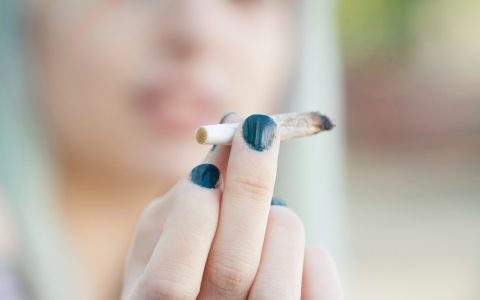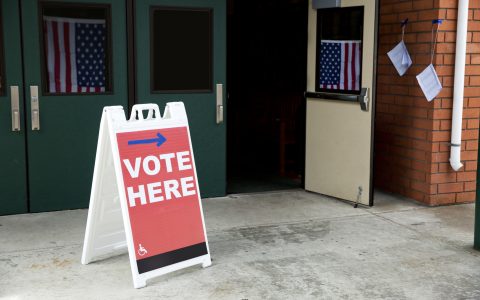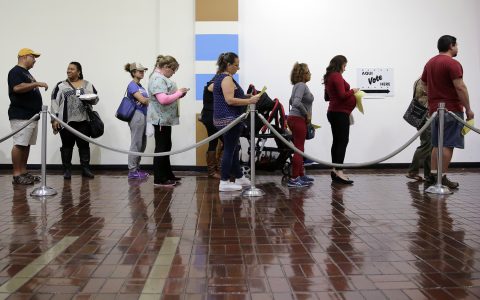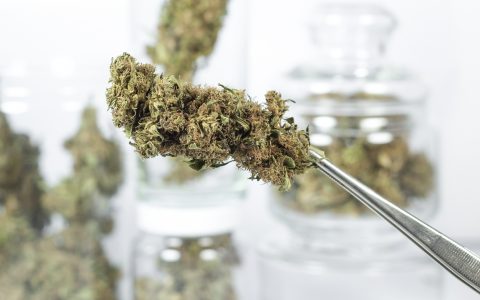President Trump is scheduled to reveal his administration’s priorities before a joint session of Congress tonight at 9pm EST. The past week has brought a flurry of troubling pronouncements on cannabis legalization from both Press Secretary Sean Spicer and Attorney General Jeff Sessions. Trump isn’t expected to address the issue of legalization tonight, but it’s worth being ready and well-armed with actual facts when the alt-facts appear.
Below, we’ve posted three of the clearest and most powerful rebuttals to Spicer and Sessions to appear in the past few days. These pieces were written by drug policy reformer Tony Newman, law professor Sam Kamin, and Drug Policy Alliance founder Ethan Nadelmann.
We’ve provided the numbered annotations to linked sources. Because, as the New York Times reminded us last Sunday, the truth must be pursued.
Tony Newman:
Sessions Peddles ‘Alternative Facts’ on Legalization
Tony Newman is communications director for the Drug Policy Alliance. This piece first appeared on the Drug Policy Alliance Blog.
If only Jeff Sessions could comprehend that any violence is due to prohibition and the absence of legal regulation, not the plant itself. Yesterday the Attorney General became the second member of the Trump administration in less than a week to provide “alternative facts” and backward analysis when it comes to marijuana.
Yesterday, in a meeting with reporters, Sessions spoke out against marijuana legalization and implied that it’s leading to more violence. “I’m dubious about marijuana. I’m not sure we’re going to be a better, healthier nation if we have marijuana sold at every corner grocery store.”
“Experts are telling me there’s more violence around marijuana than one would think,” said Sessions. “You can’t sue somebody for a drug debt. The only way to get your money is through strong-arm tactics, and violence tends to follow that.”
Ironically, Sessions’ comments are actually an argument for legalization. (1) There is some violence associated with the illicit marijuana trade – but it’s caused by prohibition and the absence of legal regulation, not the marijuana plant itself.
(2) Prohibiting marijuana is what makes it worth so much money. And there’s (3) no legal mechanism for resolving disputes in the unregulated, multi-billion dollar marijuana trade – which inevitably leads to violence. (4) When we had alcohol prohibition, we had Al Capone and shootouts in the street.
Now that alcohol is legal, (5) no one is murdered over a beer deal gone wrong. (6) Likewise, the eight states that have approved legal regulation of marijuana are taking profits away from the illicit market and (7) reducing the violence associated with it.
Those states have also created tens of thousands of tax-paying jobs (8), added hundreds of millions of dollars in state revenue (9), implemented rigorous oversight of marijuana production (10) and distribution, and (11) drastically reduced marijuana arrests, which have saddled tens of millions of people – (12) disproportionately Black and Latino – with (13) criminal records. At the same time, marijuana legalization has not led (14) to more youth marijuana use, traffic fatalities, or crime. (For more on this, see the Drug Policy Alliance’s latest status report (15) on marijuana legalization.)
Sessions’ statements follow Press Secretary Sean Spicer’s comments last week indicating that the Justice Department will crack down on legal regulation of marijuana. When asked about whether the federal government will take action in states that have legalized marijuana, Spicer replied, “I do think you’ll see greater enforcement. The Department of Justice, I think, will be further looking into [the issue]. I believe they are going to continue to enforce the laws on the books with respect to recreational marijuana.” (16)
Spicer also provided a stunningly ass-backwards analysis when he implied that legalizing marijuana was contributing to our country’s opioid problem. “When you see something like the opioid addiction crisis blossoming in so many states around this country, the last thing we should be doing is encouraging people.”
As it turns out, the notion of marijuana as a “gateway” to other illicit drugs has been rejected (17) by the National Academy of Sciences’ Institute of Medicine. Legally regulating marijuana separates it (18) from markets in other illegal drugs. And ample evidence (19) shows that people are substituting marijuana for opioids to manage different types of pain, with (20) remarkably lower rates of fatal overdose in states that allow medical marijuana. (For more on this, check out DPA’s fact sheet on marijuana and opiates.)
Sessions and Spicer are out of step with the American public (21) when it comes to marijuana policy. A poll last week found that a majority – 59 percent – of U.S. voters believe that marijuana use should be made legal in the U.S. Even more importantly, 71 percent (22) agree the government should not enforce federal laws against marijuana in states that decide to legally regulate marijuana – including a majority of Republicans and older voters.
Sessions and Spicer should remember what their boss said (23) on the campaign trail: “In terms of marijuana legalization, I think that should be a state issue, state-by-state.”
Sam Kamin:
Opioid crisis is a reason to legalize cannabis, not criminalize it
Sam Kamin is the Vicente Sederberg professor of marijuana law and policy at the University of Denver. This originally appeared as an op-ed piece in the Washington Post.
With Donald Trump’s appointment of Jeff Sessions — one of the nation’s (24) most outspoken anti-drug warriors — as attorney general, it seems the long-simmering tension between state marijuana law reform and federal prohibition is headed for a full-blown confrontation. It’s not surprising, then, that White House press secretary Sean Spicer attracted enormous attention last week when he (25) appeared to presage a federal crackdown on marijuana law reform in the states — which would reverse the lax policy on marijuana set by the Obama administration.
Spicer’s comments are a perfect encapsulation of both the complicated state of marijuana law in the United States and the frenetic first weeks (26) of the Trump administration. He stated that while the president is sympathetic toward those who use marijuana for serious ailments, the recreational use of cannabis is a different issue deserving of federal attention. As a matter of federal law, this distinction between medical and recreational use of marijuana is nonsensical.
Congress, in its wisdom, has classified marijuana as a Schedule I drug, (27) alongside heroin and LSD. By definition, (28) Schedule I drugs have no accepted medical use and a high potential for abuse; as a result their production and sale are prohibited nationwide, regardless of state laws to the contrary. Thus, if the new administration is serious about making marijuana available to medical patients, it could reschedule marijuana to make its use legal by patients around the country. Currently, medical users of marijuana are in violation (29) of federal law, putting their employment (30), access to government benefits (31) and parental rights (32) at risk even in the absence of a federal crackdown.
Spicer also expressed the view that, in light of the opiate crisis facing the country, it would send the wrong message for the federal government to retreat from the enforcement of its own drug laws. But this grossly simplifies (and perhaps even inverts) the relationship between marijuana and more powerful drugs such as opiates. While marijuana has long been derided as a gateway drug, growing evidence shows (33) that marijuana can serve as a substitute for or adjunct to the use of opiates to control chronic pain. In short, the opiate crisis might be a reason (34) to expand access to marijuana rather than to contract it.
Moreover, the power of the federal government to enforce its own laws against marijuana production and sale in the states is (35) necessarily limited. Much as Immigration and Customs Enforcement cannot (36) simply remove all 11 million people who are in the country without authorization, the Drug Enforcement Administration lacks the resources to prosecute all those in violation of federal marijuana laws. It is for this reason that the federal government has historically relied on the states (37) to do the lion’s share of drug enforcement. With a majority of states (38) now opting to regulate marijuana rather than to prohibit it entirely, however, the federal government is confronting the practical limits (39) of federal prohibition.
This does not mean, of course, that the federal government cannot make the lives of marijuana users, regulators and businesses difficult through threats (40), prosecutions (41) and harassment (42). Much as ICE raids have terrorized more than just the “bad dudes” (43) that the Trump administration claims to be targeting, increased use of law enforcement against those acting in compliance with state marijuana laws could have the effect of chilling much of the the medical use of marijuana that the administration says (44) it supports.
It may be some time before we know whether Spicer’s statements were the announcement of a new policy direction, a trial balloon or simply off-the-cuff musings (45). But they highlight the need for nuance in this policy area. The administration needs to work with the public health community, law enforcement, Congress and state regulatory officials to create policy that is informed by both experience and data.
In normal times, a crackdown against an activity increasingly popular in the states and supported by large majorities of Americans would be a low priority for a new administration and would proceed only with care and deliberation. As the past month has made clear, however, these (46) are not normal times.
Ethan Nadelmann:
As Trump Said in the Campaign, Leave Pot to the States
Ethan Nadelmann is the founder and executive director of the Drug Policy Alliance. This op-ed originally appeared in the New York Times.
When Donald Trump was running for president, he had three things to say about marijuana policy: He was (47) “in favor of medical marijuana 100 percent,” he was skeptical of legalizing it more broadly (48), and marijuana policy should basically be left to the states (49).
Last Thursday White House spokesman Sean Spicer drew a clear distinction between medical and recreational marijuana (50). Medical use, he stressed, was not a concern, both because “the president understands the pain and suffering that many people go through who are facing especially terminal diseases and the comfort that some of these drugs, including medical marijuana, can bring to them” — and because the Rohrabacher-Farr amendment (51), enacted by Congress in 2014, prohibits the Justice Department from going after medical marijuana in those states that legalized it.
Recreational marijuana, by contrast, was “a very, very different subject” and hence “greater enforcement” of federal marijuana laws could be anticipated.
In pulling back from Mr. Trump’s assurance during the campaign that states should be left to decide their own marijuana policies, Mr. Spicer made clear that a battle is coming over marijuana policy. It will be a fight that pits a Justice Department headed by a fervent prohibitionist, (52) Attorney General Jeff Sessions, against the eight states — Alaska, California, Colorado, Maine, Massachusetts, Nevada, Oregon and Washington — in which voters have approved ballot measures to legally regulate marijuana, (53) as well as other states likely to legalize marijuana in the near future (54).
There’s probably not much the Trump administration can do to reverse public support for legalizing marijuana. A Quinnipiac poll (55) last Thursday found voters in the United States favored legalization by 59 percent to 36 percent, with only Republicans and older voters opposed. An impressive 71 percent, (56) including majorities of Republicans and older voters, think the federal government should not interfere in states that have legalized marijuana. Gallup (57) and other polls (58) report similar findings, including strong majority support for legalizing (59) among Republican millennials.
What Mr. Sessions’ Justice Department can do, however, is cast a chill over the rapidly growing legal and regulated marijuana industry by targeting key players with raids, seizures of property (60) and prosecutions in federal court, and by challenging the ability of state authorities to regulate the industry (61). That would be shameful given (62) the demonstrable benefits of legal regulation: tens of thousands of taxpaying jobs (63); hundreds of millions of dollars annually in state tax revenue (64); strict oversight of cultivation, product production and distribution (65); savings in law enforcement costs (66); and far fewer young people, disproportionately (67) African-American and Latino, saddled with criminal records. Donald Trump the businessman should get this but Jeff Sessions, the reefer madness ideologue, doesn’t care.
Governors, attorneys general and legislators in the legal marijuana states (including many who initially opposed legalization (68)) are preparing to resist federal interference in this area as in others. That is because they can see that legally regulating marijuana better advances the public safety and health objectives of state — and federal — drug policy (69) than does persisting with ineffective prohibitionist policies.
Mr. Spicer’s comments made clear what Congress most needs to do. When it re-approved the Rohrabacher-Farr medical marijuana amendment in 2015, by a vote of 242 to 186, it also narrowly failed to approve, by 206 to 222, a McClintock-Polis marijuana amendment (70) that would have prohibited the Justice Department from going after recreational marijuana in the states that had legalized it. That same amendment would almost certainly pass today given both the doubling in the number of legal marijuana states this past Election Day (71) as well as changes in the composition of the House. It should be a top priority of the newly created, bipartisan (72) Congressional Cannabis Caucus, which includes the second-longest serving member of Congress, the (73) Republican Don Young from Alaska.
The federal government, even during the Obama administration, has never been (74) a fount of evidence-based marijuana policy. Mr. Spicer, with his comments linking marijuana legalization to the opioid addiction crisis, carelessly extended that tradition by getting the link exactly backward. The popular depiction of marijuana use as a “gateway” to subsequent abuse of other illicit drugs has been rejected by (75) the National Academy of Sciences’ Institute of Medicine. Legally regulating marijuana separates it from markets in other illicit drugs (76). And abundant evidence has also emerged of (77) people substituting marijuana for opioids to manage different types of pain, with (78) notably lower rates of fatal overdose in states that allow medical marijuana.
Making the transition from generations of marijuana prohibition to legal regulation of this dynamic market was never going to be a quick and easy enterprise. The Trump administration, with Mr. Sessions now in charge of federal marijuana policy, can’t stop it but they’re clearly going to make it harder and more treacherous. The best we can hope for right now is a presidential tweet restating what he said (79) during his campaign: “In terms of marijuana legalization, I think that should be a state issue, state-by-state.”





